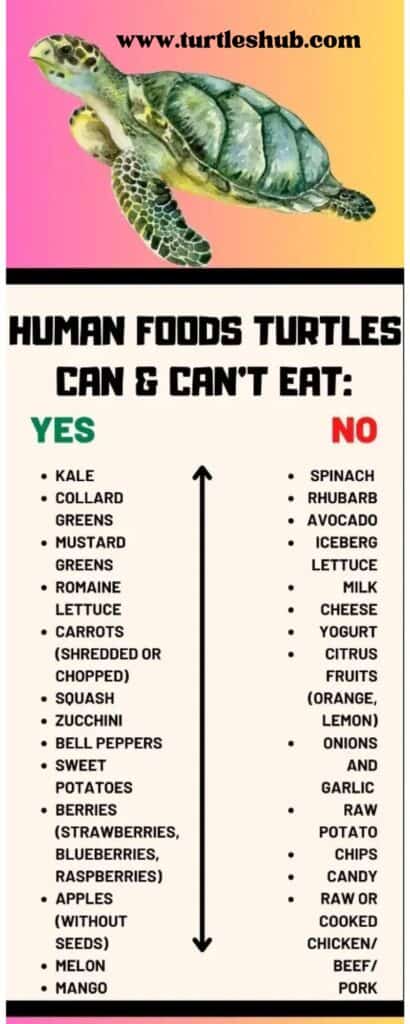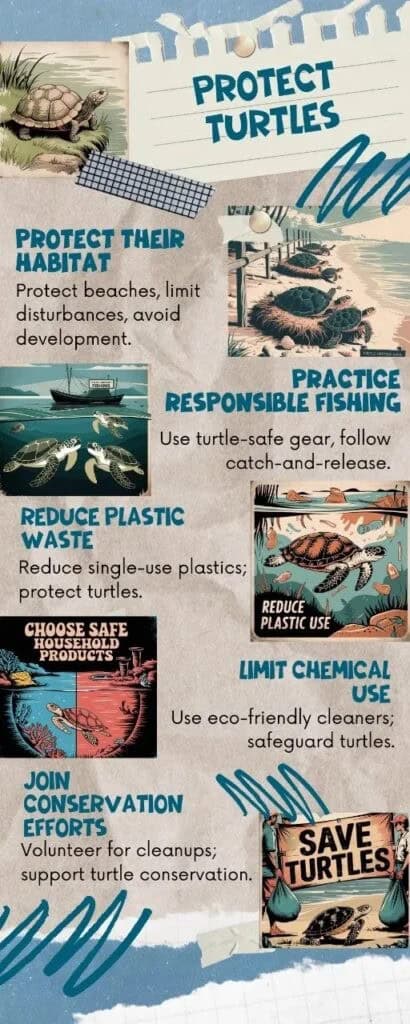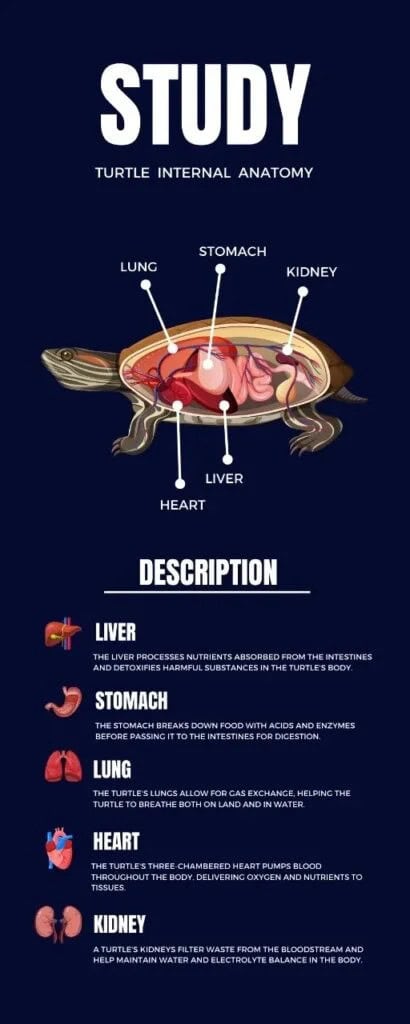Infographic 1: Human Foods Turtles Can & Can’t Eat
This infographic is a complete guide to what turtles can eat and what turtles cannot eat. Safe turtle foods include leafy greens such as kale, collard greens, mustard greens, and romaine lettuce, along with vegetables like carrots, zucchini, squash, bell peppers, and sweet potatoes. Healthy fruits for turtles include berries (strawberries, blueberries, raspberries), apples without seeds, melon, and mango.
Dangerous or toxic foods for turtles include spinach, rhubarb, avocado, iceberg lettuce, citrus fruits (orange, lemon), onions, garlic, raw potato, candy, and all dairy or meat products. These foods can cause digestive issues or serious health problems. Following this list helps pet owners provide a safe turtle diet and improve overall turtle health and care.
Keywords: turtle diet, turtle food list, what turtles eat, safe foods for turtles, what turtles can’t eat, turtle health care.

Infographic 2: How to Protect Turtles
This infographic explains the most effective ways to protect turtles and conserve turtle habitats. Key actions include protecting beaches, limiting human disturbance, and avoiding coastal development where turtles nest. Practicing responsible fishing with turtle-safe gear, reducing plastic waste, and saying no to single-use plastics all help protect sea turtles from harm.
Other turtle conservation tips include choosing eco-friendly cleaning products, limiting chemical use, and joining beach cleanups or turtle conservation projects. By taking these simple steps, we can all contribute to saving turtles, keeping oceans safe, and ensuring the survival of turtle species worldwide.
Keywords: turtle conservation, protect turtles, how to save turtles, turtle habitat protection, sea turtle conservation tips.

Infographic 3: Turtle Internal Anatomy
This infographic shows the internal anatomy of turtles, highlighting the role of each organ in keeping turtles healthy. The liver processes nutrients and detoxifies harmful substances. The stomach breaks down food with acids and enzymes. The lungs help turtles breathe both on land and underwater, while the heart pumps oxygen-rich blood throughout the body. The kidneys filter waste and maintain water and electrolyte balance.
Learning about turtle anatomy helps turtle owners understand why a balanced turtle diet, clean habitat, and proper care are essential for turtle health and long life.
Keywords: turtle anatomy, turtle internal organs, turtle biology, turtle health care, turtle body structure, turtle organ functions.

Pingback: How Far Can Turtles See? 7 Amazing Vision Facts
Pingback: Can Turtles See in the Dark? 7 Surprising Facts You Need to Know